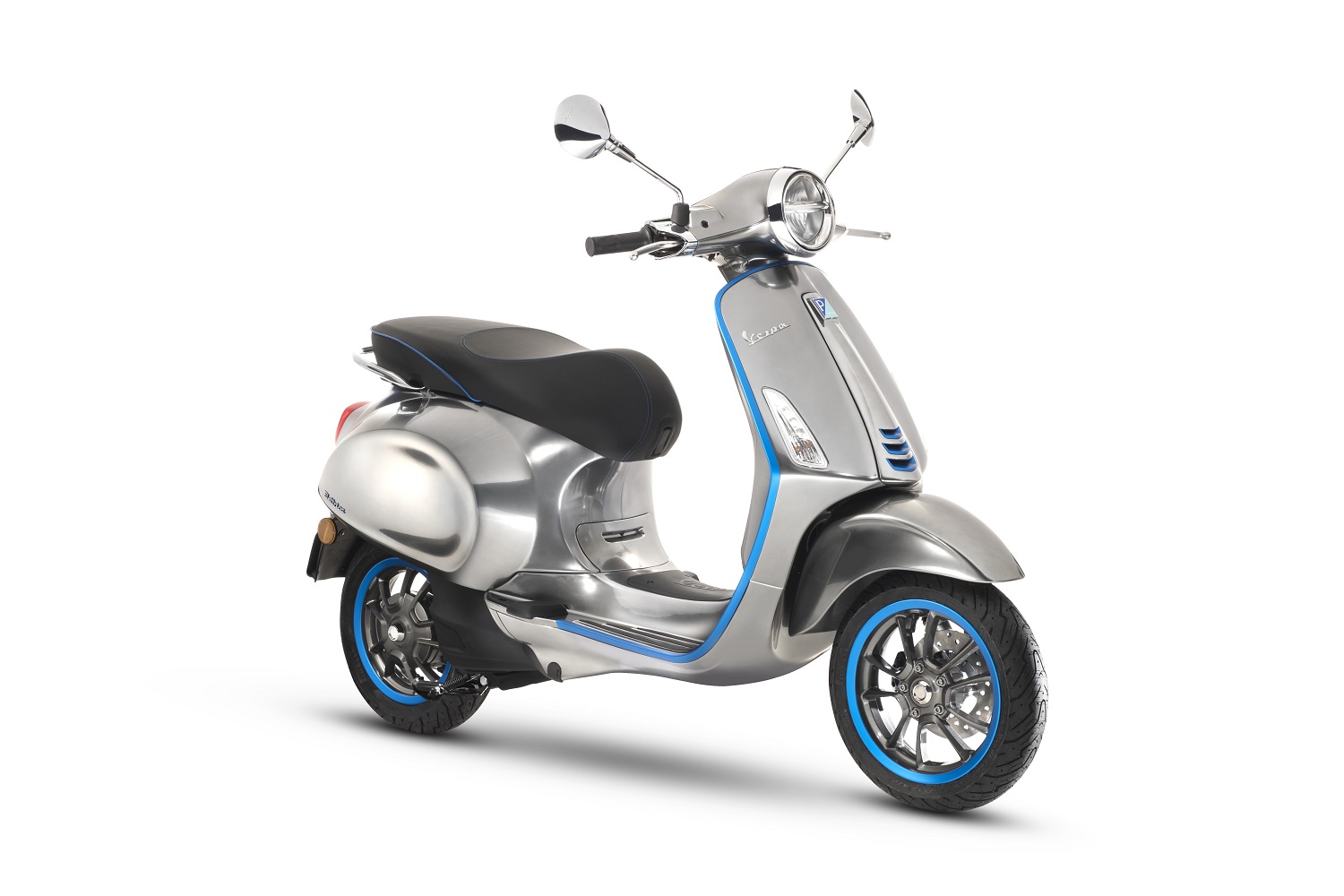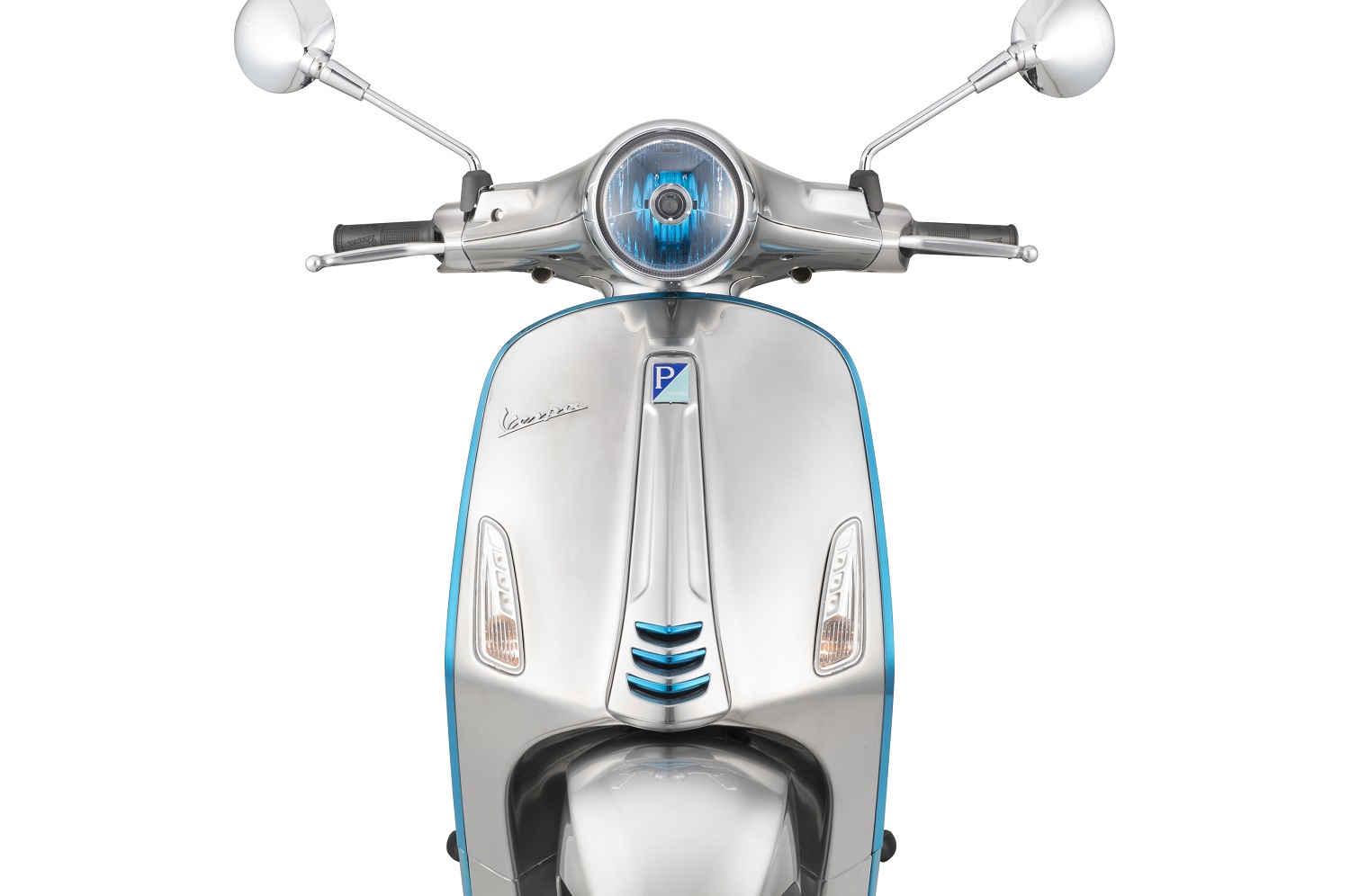Crowded European city centers could get considerably quieter in the coming years. Piaggio, Europe’s largest and best-known scooter manufacturer, has announced plans to introduce its first series-produced electric model by the end of 2018.
The Italian firm chose not to beat around the bush. It calls the scooter Vespa Elettrica, a name which literally translates to Electric Vespa in Italian. Visually, the Elettrica is nearly identical to the eponymous concept introduced during the 2016 EICMA trade show. Piaggio, like many car manufacturers, added blue accents to denote the emissions-free powertrain. The Elettrica retains the emblematic Vespa shape while gaining touches of blue on the front and the sides of the steel body, on both wheels, and on the seat.
The Elettrica’s power unit delivers performance comparable to a 50cc single-cylinder engine. Piaggio pegs its peak output at 4 kilowatts and 147 pound-feet of torque, which becomes available as soon as the rider twists the right handlebar. The motor draws electricity from a lithium-ion battery pack to deliver about 62 miles of range, which is plenty for a vehicle developed to operate primarily at low speeds in urban areas. It takes about four hours to recharge the battery, though a kinetic energy recovery system not unlike the one fitted to Formula One cars channels energy back to the pack when the scooter decelerates.
Piaggio also designed a clever hybrid scooter named Elettrica X for riders who want more freedom to leave the city. It’s an evolution of the Elettrica equipped with a gasoline-powered generator that tops up the battery on-the-go. Put simply, think of it as a Chevrolet Volt on two wheels. The generator automatically kicks in when the battery’s charge falls below a certain threshold. Its total range checks in at 124 miles, and it’s as quick to fill up as a standard, gasoline-powered Vespa.
The firm stresses the Elettrica is its most connected scooter yet, a bold claim in a sector of the transportation industry that has been excruciatingly slow to adopt basic technology in the name of cost cutting. It boasts full smartphone connectivity and a 4.3-inch thin-film transistor (TFT) screen that displays information including the riding mode selected, the speed, and the range.
Piaggio will begin building the Vespa Elettrica in its historic Pisa-area factory in September 2018. American sales will begin in 2019, and buyers will be able to purchase the scooter online. The firm hasn’t released pricing information yet, though it promises the price will be in line with the high-end bracket of the current Vespa range. That means buyers who want to go electric should expect to spend about $10,000.






